-
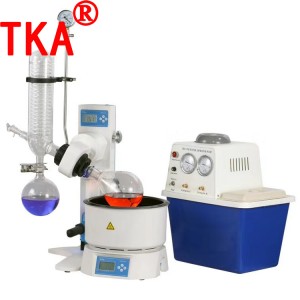
5-20L laboratory Instrument for Rotary Evaporator
The evaporation bottle rotates at a constant speed and the water bath is heated at a constant temperature. Under this condition: the material forms a large-area uniform thin film on the inner wall of the evaporation bottle for quick evaporation.
-
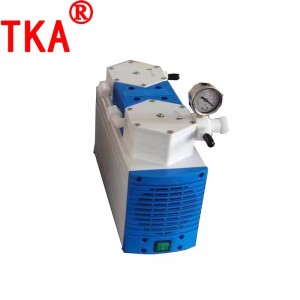
TKA Lab 2 Pump Head Diaphragm Laboratory Low Noise Vacuum Pump
Overheating protection: each product is equipped with a temperature protection switch, when the internal temperature of the body is too high, it will automatically stop, Such as temperature cooling after starting , to ensure the stability and safety of the syste.
-
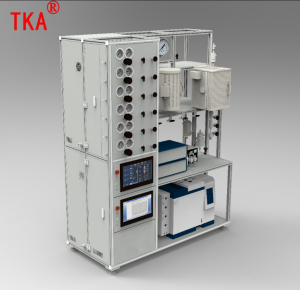
Plasma Co-catalysis Evaluation System
TKSC-DBDC80 plasma synergistic catalytic evaluation system is suitable for ammonia synthesis, methane reforming, carbon dioxide to methanol, pollutant explanation and other reactions. The system breaks through the limitations of traditional thermodynamics through the synergistic effect of plasma activation and thermal catalysis to achieve high efficiency and low energy consumption of chemical reactions.
-
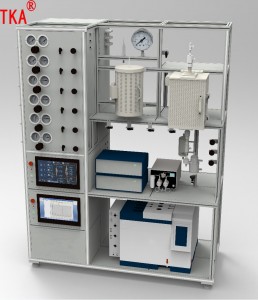
Solid Oxide Fuel Cell Evaluation System
Solid oxide fuel cell (SOFC), the electrolyte used in SOFC is a solid non-porous metal oxide, usually yttrium trioxide-stabilised zirconium dioxide (Y2O3-stabilised-ZrO2, YSZ), and the oxygen ions within the electrolyte at an operating temperature of 650~1000°C have a high conductivity. The material used for the anode is nickel-zirconia cermet (Ni-YSZ) and the cathode is strontium-doped lanthanum manganate (Sr-doped-LaMnO3, LSM).
Advantageous features of SOFC: because of the all-solid structure of the battery, it avoids the problems of corrosion and electrolyte leakage caused by the use of liquid electrolyte; it does not use platinum and other precious metals as catalysts and greatly reduces the cost of the battery; the high-quality waste heat of SOFC can be used for cogeneration, thus improving the utilization rate of the waste heat, and the total power generation efficiency of up to 80% or more; the fuel has a wide range of applications, and, from the principle of solid oxide ionic conductor is the most ideal. Wide range of fuel application, in principle, solid oxide ionic conductor is the most ideal electrolyte material for transferring oxygen, so SOFC is suitable for almost all combustible fuels, not only gas, carbon monoxide, methane and other fuels, but also natural gas, coal gas and other hydrocarbons can be used directly as fuel.
-
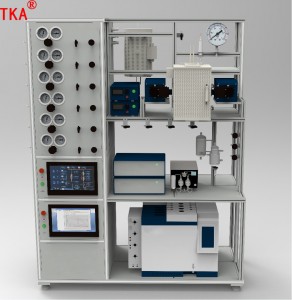
Electro-Thermal Synergistic Catalyst Evaluation System with Photo-Thermal
The TKSC-SOEC80 electro-thermal synergistic catalyst evaluation system is a solid oxide electrolysis cell (SOEC) experimental platform that combines the synergistic effects of electric and thermal fields for the efficient electrolysis of H2O/CO2 to produce H2/CO, which is the inverse reaction of SOFC. The system investigates the influence of electro-thermal coupling effects on electrolysis performance and optimises catalyst materials and operating parameters by precisely controlling temperature, voltage and gas composition. This SOEC evaluation system is scientifically designed and comprehensively functional, capable of meeting a wide range of testing needs from materials research to system integration. With the high-precision control and multi-functional test modules, it can provide reliable data support for SOEC performance optimisation and commercial application.
Photoelectrothermal multi-field coupled catalysis has potential in environmental treatment (e.g. efficient degradation of pollutants), energy conversion (e.g. CO2 reduction, water decomposition), and chemical synthesis. For example, in CO2 reduction, light provides excitation energy, electricity helps electron transfer, and heat promotes reactant activation, and the combination of the three may improve product selectivity and reaction rate; photo-thermal coupling for electro-synthesis of ammonia. Photoelectrothermal catalysis represents the cutting-edge direction of multi-energy field synergistic catalysis, and will play an important role in the field of green chemistry and carbon neutrality in the future. -
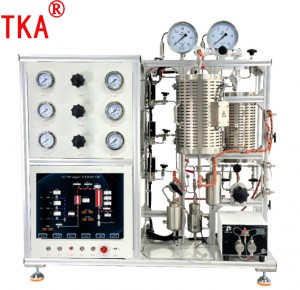
High Temperature High Pressure Thermal Catalytic Evaluation Units
Product Description High-temperature and high-pressure thermal catalytic evaluation system is a set of reaction instruments used to complete the evaluation and screening of catalyst activity, applicable to gas, liquid or gas-liquid simultaneous feeding; gas-solid, liquid-solid, gas-liquid-solid r... -
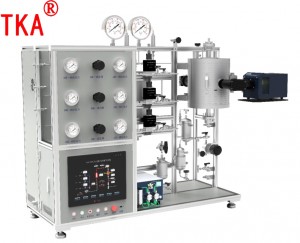
Dual Light Path Photothermal Catalysis System
TK-DPTC dual optical path photothermal catalysis system is suitable for photothermal co-catalysis, evaluation and screening of photocatalytic catalysts.
It is mainly applied to high-temperature photothermal catalytic reaction, photothermal co-catalysis, which can be specifically used in the fields of synthesis and sintering of semiconductor materials, preparation of catalyst materials, evaluation of activity of catalyst materials, hydrogen production by photolysis of water, oxygen production by photolysis of water, reduction of carbon dioxide, gas-phase photocatalysis, photocatalytic degradation of formaldehyde gas, VOCs, NOx, SOx, nitrogen fixation and so on.TK-DPTC dual optical path photothermal catalytic system (<5MPa) is a set of fixed-bed photothermal reaction device used to complete the evaluation and screening of catalyst activity, applicable to gas, liquid or gas-liquid feeding at the same time; gas-solid, liquid-solid, gas-liquid-solid reaction, able to achieve automatic control of the temperature, gas-phase flow rate, liquid-phase flow rate, the reaction temperature is able to achieve the programmed temperature rise (linear heating), through the programmed temperature rise settings The heating time and holding time of the experimental temperature can be set through the programmed heating, and the experimental products under different pressures and temperatures can be tested and analysed on-line in stages with the GC and other analytical instruments.
-
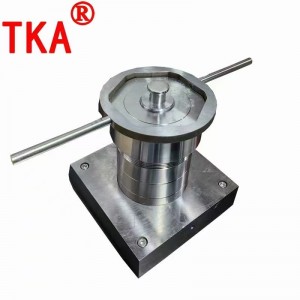
500ml Hydrothermal Synthesis Autoclave Reactor
The hydrothermal synthesis reactor is also known as high pressure disintegration tank, hydrothermal reactor, pressure dissolution bomb, high pressure digestion tank. It is used for the rapid disintegration of insoluble substances by using strong acid or alkali in a closed environment with high temperature and pressure. It can be used in the determination of heavy metals such as lead, copper, cadmium, zinc, calcium, manganese, iron, mercury, etc. It can also be used as a reaction vessel for high temperature and high pressure corrosion resistance and high purity, as well as for organic synthesis, hydrothermal synthesis, crystal growth or sample ablation and extraction. In sample pre-treatment ablation of heavy metals, sludges, rare earths, aquatic products, organic matter, etc. Therefore, it is widely used in research and production in petrochemical, biomedical, material science, geochemistry, environmental science, food science, commodity inspection and other sectors.
-
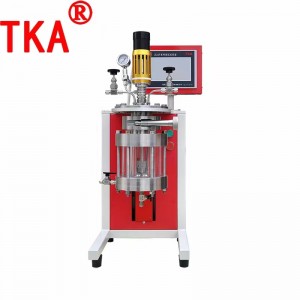
Liftable 2000ml Sapphire High Pressure Glass Reactor
The product is used in chemistry and chemical synthesis reactions or catalytic reactions at high temperatures, high pressures and negative pressures, where pressure, temperature, rotational speed and the addition of inert gases are to be measured simultaneously and where on-line sampling is to be achieved.
-
-
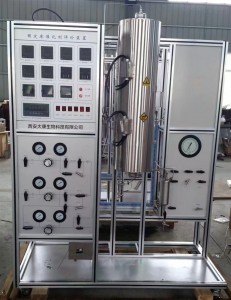
Fixed Bed Hydrogenation Reactor
Catalyst loading capacity: 100ml, 50ml, 30ml.
H2 gas flow rate: 0-500ml/min, control accuracy: ±1%
N2 gas flow rate: 0-500ml/min, control accuracy: ±1%
Liquid feeding volume: 0-10ml/min, control accuracy: ±1%
Reaction pressure: 0-9Mpa, control accuracy: ±1%
Design pressure: 10Mpa, control accuracy: ± 1%
Reaction temperature: room temperature-500℃, temperature control accuracy ±1℃.
Design temperature: 550℃, control accuracy: ±1℃.
-
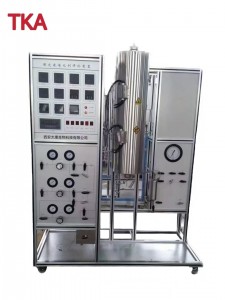
Fixed-bed Catalyst Evaluation Units
Overview The fixed-bed catalyst evaluation device is equipped with two gas inlets and one liquid inlet, the gas inlet is precisely controlled by a gas mass flow controller, and the liquid inlet is controlled by a precision metering pump. The device adopts a reactor with three sizes of reactors, w...

